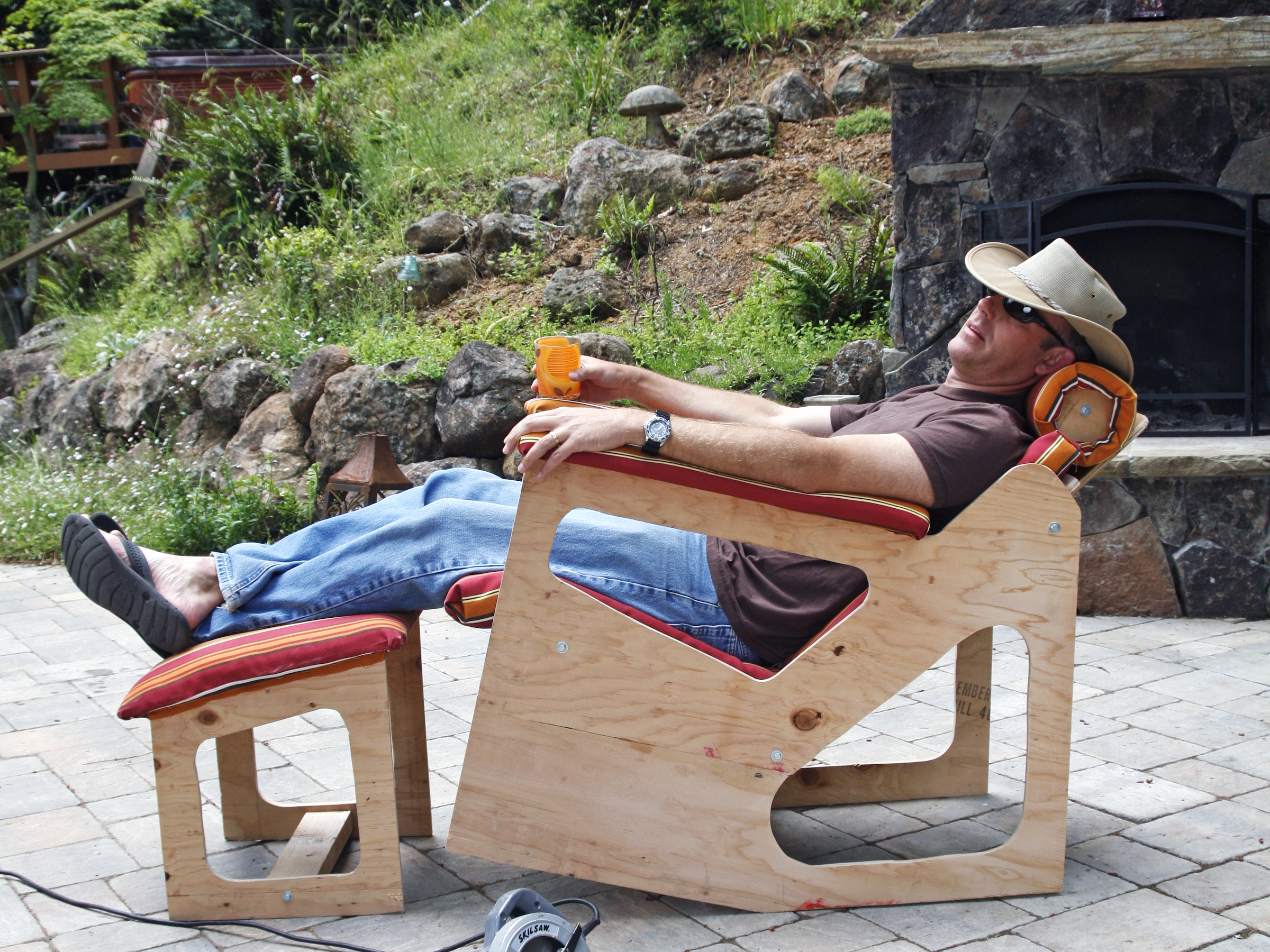Like origami, single-sheet plywood projects transform a standard plane into countless 3D objects. Generations of designers have worked within this form, laying out cleverly fitted pieces that make furniture and toys with little or no wasted wood. But can a chair be comfortable, look good, recline, disassemble for compactness and portability, and still be made from just a single sheet of plywood?
With a determination borne of frustration and frugality, I set about designing a chair that would meet all my requirements. I began by making a crude study model, with all body-supporting surfaces adjustable: the seat, the back, armrests, headrest, footstool, the angle between the seat and back, even the overall size. The model’s only given: it would use a set of standard patio chair cushions and one sheet of plywood.
Somewhere in the middle of seemingly infinite adjustments, I discovered that recliners really are much more comfortable than upright chairs, so I threw reclinability into the mix as well. Finally I found a combination that fits — ergonomically, esthetically, and economically. It’s even been sleep-tested. I call it the Rok-Bak chair.
The Rok-Bak is very comfortable, easy and inexpensive to build, can be assembled or disassembled in a few minutes, and can be stored and moved about easily, taking up very little space.
If you’re really ambitious, you can upholster your own cushions (as I did with expert help from my brother Phil), as well as the headrest and footstool, for a perfectly matched set. The upholstery techniques are similar for most any fabric. You can cut the chair parts with a jigsaw and a circular saw. Fabric work can be limited to cutting with good scissors and making 1 long seam — with either a sewing machine or fabric bonding tape — then stapling in place.
You’ll also need additional hardware and staples. You should decide at the outset which configuration you like: basic or Rok-Bak. Keep in mind that the Rok-Bak is quite usable rocked forward. Once you cut the large bottom cutout, you can’t change the chair back to the basic configuration. However, you can later convert basic to Rok-Bak.
Since the A side of the plywood (the good side) faces outward on the chair and stool, the C side, with its knots and other imperfections, will be almost completely hidden.


